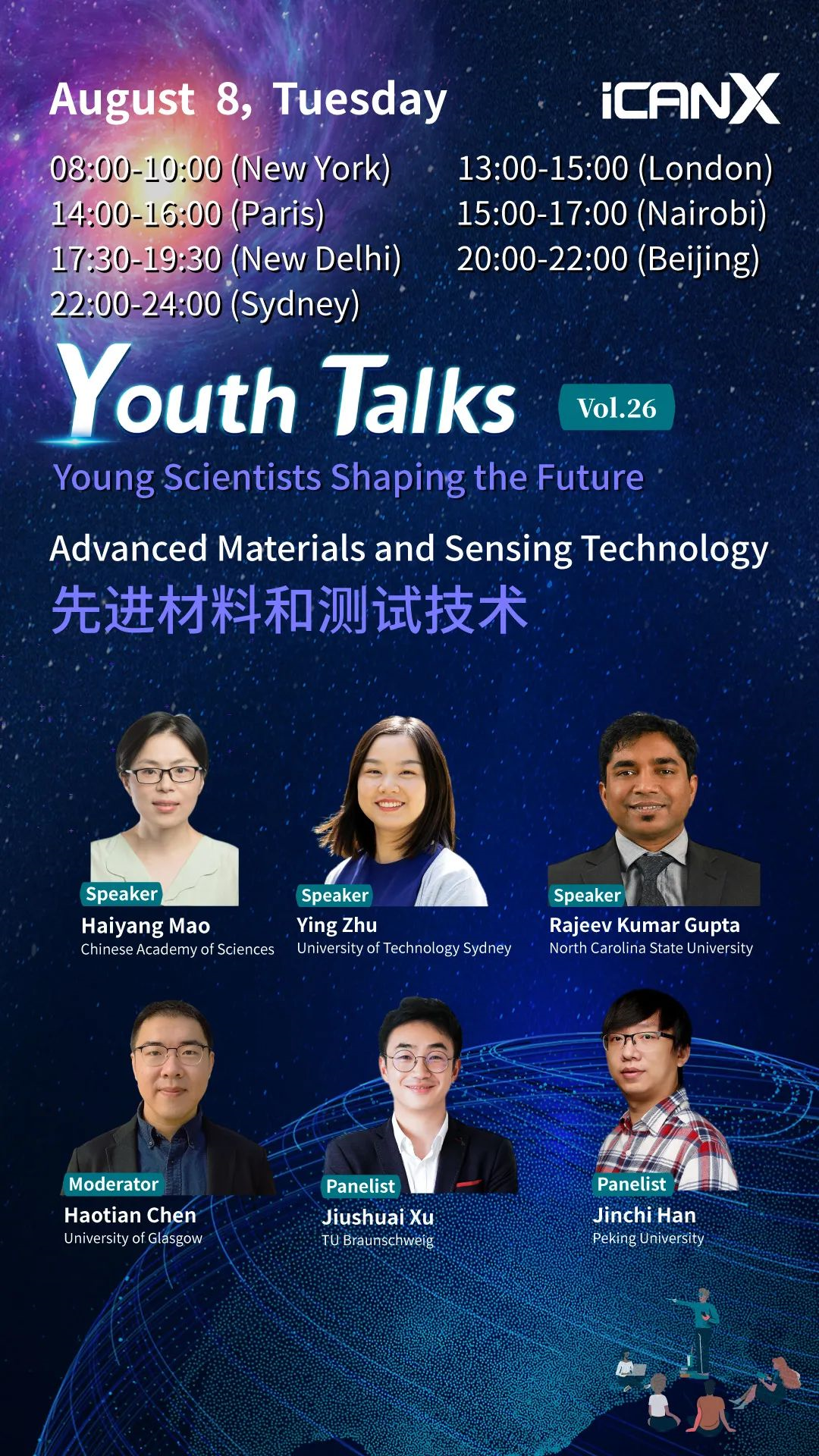Speaker: Haiyang Mao, Chinese Academy of Sciences
Time: 20:00-22:00 p.m., August 8, 2023, GMT+8
Venue: Scan the QR code to watch online
Abstract:
Sensors have become a strategic requirement for various countries, and the performance of sensors determines the quality of information extraction. Due to its special surface characteristics, nanoforests have the characteristics of tip/surface effect, light transmission/absorption, molecular adsorption, etc., and have been applied in different fields such as energy, biology, medicine, photonics, etc. The traditional serial and parallel processes that can be used to prepare nanoforests have problems such as high cost, difficulty in control, susceptibility to metal pollution, and incompatibility with CMOS processes. In this report, I will introduce a new type of nanoforest structure and its preparation method. In addition, based on the wide spectrum and high absorption capacity of the nanoforests and the molecular adsorption capillary condensation effect, we have achieved the integrated application of the nanoforests in MEMS optical sensors, humidity sensors, vacuum sensors, and other devices, and greatly improved the performance of the sensors. In addition, we have also explored the intelligent application of sensors.
Biography:
Haiyang Mao is currently a Professor at Institute of Microelectronics of Chinese Academy of Sciences (IMECAS). She received her Ph.D. degree in Microelectronics and Solid-State Electronics from Peking University in 2011. Her research interests include MEMS devices and nanomaterial-based sensors. Prof. Mao has published more than 70 peer-reviewed papers (Advanced Functional Materials, Small, ACS Sensors, etc.) and contributed over 40 conference talks (IEEE MEMS, Transducers, IEEE Sensors, IEEE NEMS, etc.). Besides, she has applied for 108 patents, and authorized 54 patents. She has also developed several MEMS sensor products, by focusing on the industrialization of MEMS sensors, she has produced tens of millions of sensor chips and modules, which have been widely used in fields of biomedical research, smart home, and industry.
Source: iCANX
